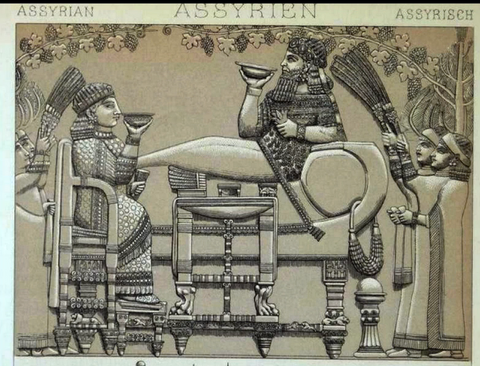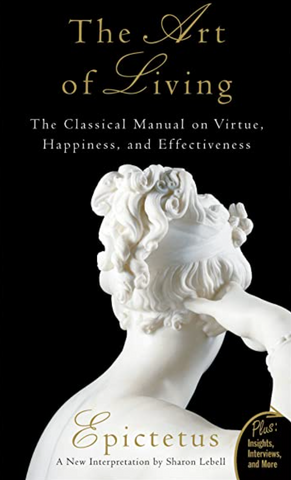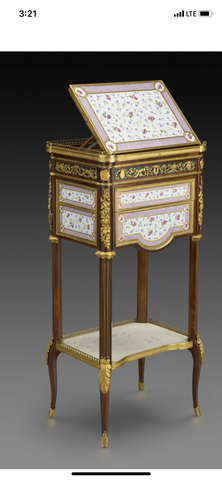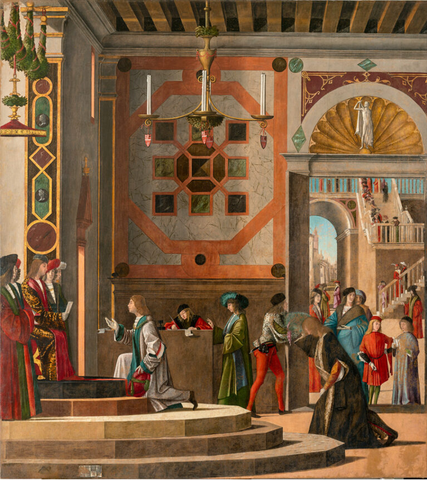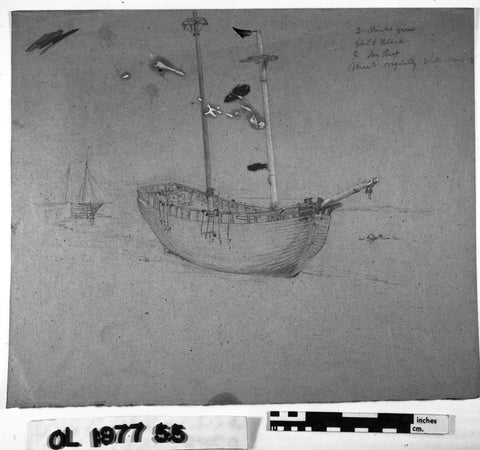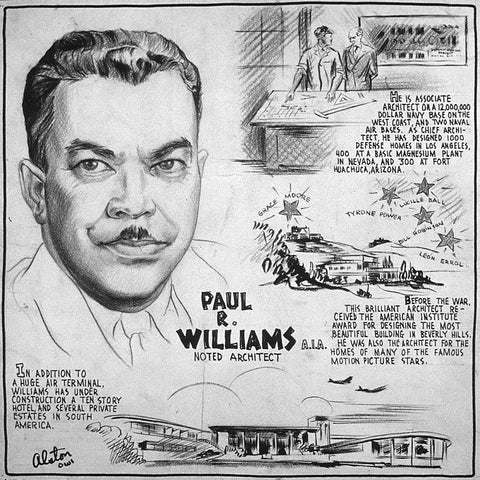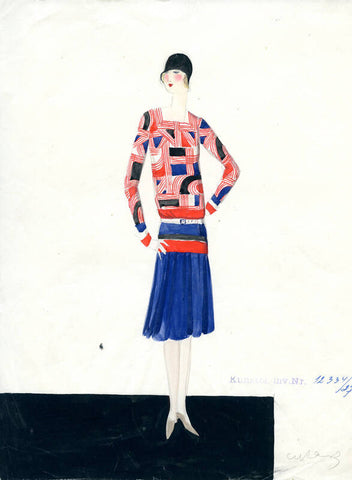Frederic Church and the Early Trips to Mount Desert Island, Part II
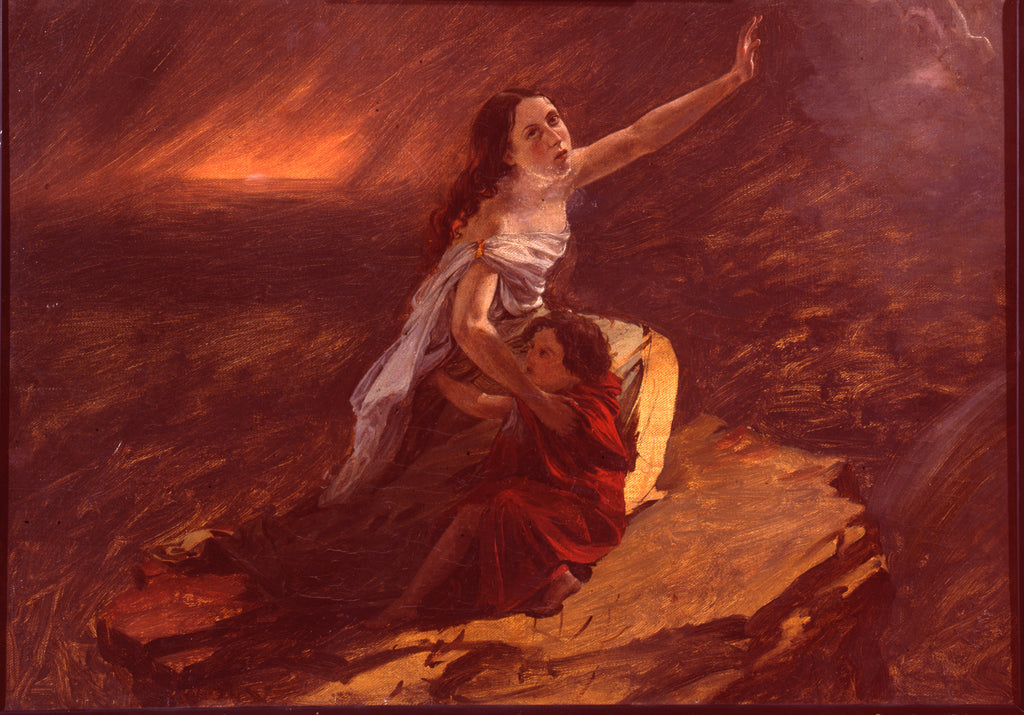
PART II
The Later Trips to Maine and the Sunset Series
In his later trips to Mount Desert Island and Maine, Church's true talent and interest were solidified, growing out of his various uses of previous island pictures. This interest was the sky. By the mid-1850s Church had almost completely switched his focus on the island from trees and to skies and atmospheric effects, more particularly sunsets, and he never again painted a major easel painting of a sunrise like Beacon. This renewed vigor with which Church approached sunsets and skies after his first trip to South America show that his intrigue was only increased and confirmed by what he saw in South America. He then brought this knowledge and interest in skies into paintings of Maine and combined it with the rugged scenery he already loved and appreciated in Mount Desert. After the 1853 South America trip which kept him from his usual summer trips to Mount Desert Island, Church resumed his visits to Mount Desert Island every summer it was possible to go up until 1862, when he ceased going abruptly and completely.[1]
Out of these last trips to Mount Desert Island came Church's most famous sunset easel paintings, including Sunset (1856, oil on canvas, Munson-Williams-Proctor Institute, Utica, NY) and culminating in Twilight in the Wilderness (1860, Oil on canvas, Cleveland Museum of Art). Except in some specific instances where the studies for these paintings are identifiable by date, it is unclear which trips led to the sketches which specially inspired these scenes. In the case of Twilight in the Wilderness, the painting is really a conglomerate of all the atmospheric effects Church learned to portray and homed in on during his years in Mount Desert after his experience with Humboldt's Cosmos and the different world of South America. The great paintings of the American wilderness served as the segue into Church's jumping off point from his interest in the ideal of America and her representation into the appreciation and emulation of the exotic, the foreign, the ancient. These later trips to Mount Desert were Church's last trips to the island, provided material for some of his best work, and notably provided the material for the last major painting to come from scenery in North America, Twilight in the Wilderness.
During the summer of 1854 following his first South American trip, Church again returned to Mount Desert Island, as well as visiting Nova Scotia. During this trip he probably stayed at Somesville, as he completed the Road at Somesville (fig. 11).[2] Church also made several sky studies which were the basis for easel paintings in the years to come. He continued traveling to Maine and to make sky studies during his 1855, 1856, 1860, and 1862 trips, and was working on one of these sky/ Mount Desert easel paintings for some duration of every year until 1865.

Road at Somesville (fig. 11)
During this 1854 trip he saw a dramatic sunset, which could have been the inspiration for famous oil painting, Sunset (1856).[3] As discussed above, this Sunset has a similar sky that was so successful in his earlier Beacon. During this period, Church's sketches show that indeed he was most interested in capturing twilight effects, and his last great American pictures of landscapes, which all focus on the sky, took their studies and origins from these last trips to Maine. Twilight, (Sunset) (1856) also was inspired from one of these later trips. Also produced from this period and part of the sunset series is Twilight, Bar Harbor, (also known as Sunset, Bar Harbor) (September 1854) (fig. 12) which was also a study for the 1856 Sunset. [4]

Twilight, Bar Harbor, (also known as Sunset, Bar Harbor) (September 1854) (fig. 12)
The specific date of September 1854 on this study which is clearly used in the 1856 oil shows that this dramatic study stayed in Church's repertoire for a year or two before he finally incorporated it into a painting, and that these Mount Desert skies had a profound and lasting impact on his imagination and artistic sensibilities. For the finished Sunset, Church used Mount Desert Island sketches, sunsets, boulders, round hills, and combined them with Mt. Katahdin's shape, thus melding his appreciation of the views and sensibilities he found both at Mount Desert and at Katahdin, the sky he admired most at Mount Desert, and the shape of Katahdin which he found very dramatic.
In his diary, Tracy describes a sunset which focuses on the effects of a darkening sky and the "second twilight." His description of the scarlet sky turning to purple is similar to the color Church observed in his second twilight of the original sketch which served as the basis for Sunset. In a "second twilight," the sun has dropped below the horizon, the sky begins to get dark, and some of the most dramatic sunsets can be observed. Most of Church's later sunsets, after Beacon where the orb of the sun is still noticeable, are this type, where the sun has already disappeared and just the after-effects are noticeable. On his sketch of Twilight, Bar Harbor, (fig 12) Church describes the colors of the second twilight. His working method included usually detailed written notations of colors and effects, to trigger his memory for the later oil study. Church's color notations start at the top of the sketch and are almost exactly replicated in the Study for Sunset. At the top he writes "Mottled clouds in regular ranks;" lower, the sunset colors range from ''brilliant splendid orange " to "cooler green gold brilliant" The lower clouds were identified as "illuminate with rich orange and lake (i.e. purplish-red) light / in parallel lines but dim compared with open sky / also broken with openings showing the cool bright sky / shadow tint brownish purple."[5] Church's notations match Tracy's description of a similar second twilight, as orange and atmospheric phenomena he had explored previously in his 1850 submissions to the National Academy.
The Final Mount Desert Years, 1853-1860
Between Church’s first and last exhibited Mount Desert paintings in 1851 and 1863 respectively, Church steadily climbed to the peak of his popular appreciation. Throughout the relatively stable middle years of Church’s early success, he returned to Mount Desert Island nearly every summer, making sketches which would continue to influence him over the next decade, especially in his sky paintings. For example, the remarkable sunset her say in 1853 on Mount Desert Island, he incorporated exactly into a painting from 1865, Twilight (Sunset). The ability to paint in this detail over a decade later shows the importance of the supporting details of his sketching methods. His number coded margin notes trigger an exact visual description in his mind’s eye. While Church may have occasionally taken liberties in designing his landscapes, he often used skies he had actually seen. Many of his paintings from this period can be traced to specific sketches from summer trips because of the exactness of his sketching. Maine was thus ever on his mind, and he had the remarkable capacity to recall and reproduce these real-life scenes.
Though Church took two trips to South America during this period, his artistic loyalty was to North America and his native United States. He even created a patriotic rallying symbol for the Union at the outbreak of the Civil War in 1861. It was at this time that Church settled down, got married, and became a farmer. Not until the next decade did his penchant for the exotic overtake his interest in America, leading him back to the memory of South America as material for interesting and different subjects. In the popular imagination, however, Church remained the great painter of the American landscape, the United States home front. Church had begun his travels to Maine expecting to follow the principles of Cole, visioning American destiny and progress. He ended up, however, with a different solution to landscape painting, based, in part, on what he had learned in South America, and from the scientist who inspired him to try his hand at some new scenery, Alexander von Humboldt.
Because of Humboldt and Church's interest in using aesthetic realism to achieve scientific accuracy, as well as Humboldt's glorification of landscape art as being able to depict nature in its "exalted sublimity," Church returned to Mount Desert Island in 1855 with renewed vigor, this time to depict “the dreamy land.. with grace and beauty.” On this trip, Church was not thinking about religion or allegories; but rather about fishing, hiking, making caricatures of his friends for entertainment, and the attention of his friends. Church's trip to 1855 is noteworthy in that he traveled together with a party of twenty seven people, which grew during the summer. The party left together on 31 July from Boston and spent August at Somes Tavern in Somesville. People continued to come and go so that at one point the members of the families all staying together grew as large as thirty-one.[6]
This large trip was unusual for Church, who tended to take his summer forays into the wilderness for sketching in the company of only one or two family friends, or fellow artists or writers. There were two focuses on this trip: one was clearly to gather sketches for paintings, and the influence of South America in Church's handling of atmosphere and interesting expanses of wilderness is evident in a major sunset painting in the series which came out of this trip, Twilight (Sunset) (1856); a second focus just as large for Church during this period of the mid-1850s was on having fun and being with friends in the outdoors, taking advantage of everything the island had to offer with the ocean and mountains and beaches for more than just his sketchbook.
The 1855 trip is noteworthy for several other reasons as well as its large numbers. First, Tracy's diary at the Pierpont Morgan library tells us about the habits of people on the summer trips, about the cultural life of Mount Desert Island, and about what Church's daily activities were while on his sketching trips.[7] The existence of the diary which describes in detail what Church did each day as well as of what he sketched, can help me assign new dates and titles to sketches from that summer, to place them in a chronological order, and to date some sketches more probably to that summer by verifying them with the journal. The trip was an important event for the island as well, often cited as the first example of true summer tourism.[8] It was important for Church, as he established new connections and friendships and reaffirmed old ones, which would be influential on his future summer travels.[9]
The Last Mount Desert Trip
For their honeymoon in 1860 Church chose to take his new wife Isabel, accompanied by his two sisters, to Mount Desert Island for one of his sketching trips. The scenery was beautiful, it made a lovely spot for summer honeymooners, and it was one of his favorite places to sketch in the summer. There are few sketches from the trip in existence, possibly because Church was occupied with his new wife and showing her scenes rather than sketching them.
The summer of 1861 was spent moving into the new house Church had bought on the Hudson river in Catskill, and with the political events of the Civil War which had just begun in April. Church made one last trip to Mount Desert in 1862, from which he produced his last painting of a specific place at Mount Desert, and with Coast Scene came full circle to what his teacher produced as his masterpiece from the island, depicting the cliffs at Otter Cliffs.[10] Coast Scene, Mount Desert shows the violence of the sea as Church had never depicted it before. Although to an untrained observed, the scene looks like any section of Maine coast, it is specific to the eastern side of Mount Desert and was the result of detailed and accurate studies of the cliffs. Church took this painting very seriously, producing an exact study for it to which he adhered more closely than to any other study he made for a large painting. Another study at the Cooper-Hewitt, to my knowledge unpublished, also directly influenced this painting. This painting is unusual for Church because of its lack of people and could have been influenced in its violence by the torn-up nation in 1862, or by Darwin's new theories which shook up Church's previous ideas of things in harmony.
Coast Scene is the last of Church's great American paintings, and the last of his most lucrative and famous period. For this reason, it is useful to keep in mind the theories, travels, and friendships during the decade of the 1850s which had bearing on his final representation from Mount Desert Island. Through accurate visual description and detailed observation Church transports the viewer into a realm of feeling where one can literally feel the physical details like the weather of the canvas.
Negative Reception of Coast Scene
In Coast Scene, critics had trouble defining the picture with an overall theme as they had easily done with the religious inspiration they attributed to Twilight in the Wilderness. The painting was by no means an unqualified success as had been his others of the past few years, and never again would Church have the overwhelming consistent success of his earlier major works, The Heart of Andes, Niagara, and Twilight in the Wilderness. Some critics complained about the effects of his color.[11] Another trait of Church's which came under increasing criticism was his extreme attention to detail. The detailed depiction of the waves in Coast Scene is more realistic and studied than those of Beacon a decade earlier. This is perhaps because in Beacon, Church is still more interested in symbolism than in realism with the scientific accuracy he espoused after 1857 and the second South American trip. Even when Coast Scene can also be seen as backlash against this interest in science, when Darwin challenged Church's notions he returned to the religious force of nature. His careful detail and scientific truthfulness were under attack from the press where it had been only a few years before in The Heart of the Andes one of the contributions to his success. One critic wrote, "Mr. Church has been accused, and not altogether without reason, of crushing himself beneath his subject. He has, that is to say, often sacrificed general effect to a multiplicity and elaboration for detail." Humboldt always understood the importance of general and overall effect in landscape painting, not wanting perfect accuracy, but the detail was always one of Church's favorite inclusions in his painting. With Coast Scene, Church took accuracy to a new extreme, of effect, of detail, even of location and geographic shape. It was more than the detail, the realism which was coming under criticism with the new school of contemporary art.[12]
After the war there were new European influences in art, and Impressionism came to New England in the form of American impressionists, and to Mount Desert with artists such as Childe Hassam. Church's realistic style of art was less popular, and landscape painting also fell out of interest in the general public opinion. As Church turned to his exotic tastes, the public turned away from taste in Church. On the one hand, Church deliberately switched from the subjects which had made him famous, New England Scenery and Sunsets. On the other hand, the public showed a marked disinterest in these subjects anyway, showed in public responses and decreases in value and prices. Yet neither was the public interest piqued by Church's new interests, the exotic lands of the Middle East. While the Heart of the Andes had been a huge success, because of its uniqueness and value for simple exoticism and difference from what the public had been used to seeing, by the 1860s, photography was more common and so was travel. The lands were more accessible to the average person, and paintings were no longer displayed like movies with admission and special lighting as was The Heart of the Andes. Church seemed unconcerned, however, with this state of public affairs; he painted what interested him, as always, and Mount Desert no longer filled his needs.
Changes in Mount Desert Island
Church stopped going to Mount Desert after completing Coast Scene. Yet surely there were other reasons besides the progressively negative reception of his last masterpiece from the island. Part of this reason must have been the changes in Mount Desert itself, which Church probably saw happening even in 1862, his last trip there. Tracy's diary provides a valuable primary source of the cultural life as it appeared to men from the city like Tracy and Church. His accounts are especially valuable as a way to compare with what happened to the island within the decade, and the drastic changes in the local people's subsistence activities. Tracy spent several passages enthralled with the variety of cultural activities and livelihoods that Church enjoyed on the island, with Tracy and his family - fishing, sailing and hiking. But there was something else he sought too in the rugged desolate nature of parts to the island, and the charm of the local folk, all of which rapidly disappeared with the rise of steamship access, rail lines, and well-developed roads. Some of the Tracy party that summer were struck so deeply with the beauty of the island, that they became some of the first summer residents to permanently set up houses on the island. But Church had his summer dream house, at Olana, and felt no need to become part of the social climate developing on the island.
Thus, with the various influences on his life so vastly different from those of the 1950s, his work changed as did his focus. The religious intensity of his wife, the death of his two children, the Civil War, and his interest in building his new Jerusalem on the Hudson River seem at odds with his lighthearted sketching trips of the Mount Desert era. Yet the early sketches from this decade retain their allure. The joy of these sketches comes from the personality of the artist, which shows through during his trips. Although his depiction of the wilderness changed with his beliefs about art and representation, he looked to these sketches throughout his career. In a review of Church’s art, his field work from this location in coastal Maine is often more illuminating, more vibrant and alive, than his oil paintings.
[1] For two summers in this decade travel to Mount Desert was impossible; in 1857 and 1858, the year of his second South American trips and the creation of the Heart of the Andes; and in 1861, when he took no trip because he and his new wife were busy moving into their new house.
[2] Color notes on the margins of this study correspond to numbered areas on the drawing “2. Pines rich greens some deep others yellowish 3. Maples yellow light including light browns dark brown green. – note one tree generally catch the green more decidedly than the others. 4. Bluish grey green 5 Warm sherry. 6 very rich green 7 variety of rich greens- pines do not show the influence of the wind. 7 Maple red and orange- leaves turn up whitish in the wind”
[3] Because the similar titles of all the paintings in the sunset series may lead to confusion, at times I include the date of the painting in parentheses following the title, where it will help to clarify which painting is being discussed.
[4] Color notes for fig. 8 include “illuminate with rich orange and lake light in parallel lines but dim compared with open sky also with openings showing the cool bright sky shadow brownish purple”)
[5] Written description of Twilight, Mount Desert (1854), in Kelly, National Landscape, 86.
[6] Tracy, “Log Book,” 7 August, 1855, p.26.
[7] The Mount Desert Island Historical Society published this diary for the first time in July, 1997, and I am grateful to Anne Mazlish for alerting me to the whereabouts of the diary at The Pierpont Morgan Library in New York.
[8] In the guide Acadia National Park put out in 1933, there is a list of Important Events in Acadia’s History, listed chronologically. One heading is “1855. First “summer visitors” recorded as vacationing on Mount Desert Island.” Citation in Department of the Interior, National Park Service, General Information Regarding Acadia National Park (1933), ii.
[9] Church met the Titus family, who would become his patrons and with whom he would travel abroad, and he strengthened his friendship with Winthrop, with whom he traveled the following summer.
[10] Wilmerding has argued that these cliffs are actually Schooner Head. See Wilmerding, Mount Desert, 102.
[11] Kelly, National Landscape, 125.
[12] Kelly, National Landscape, 125. In 1863, the Boston Evening Transcript published a series of letters questioning the role of realism in contemporary paintings. For more, see Huntington, “Church’s realism,” 16 March 1863, p.1.

